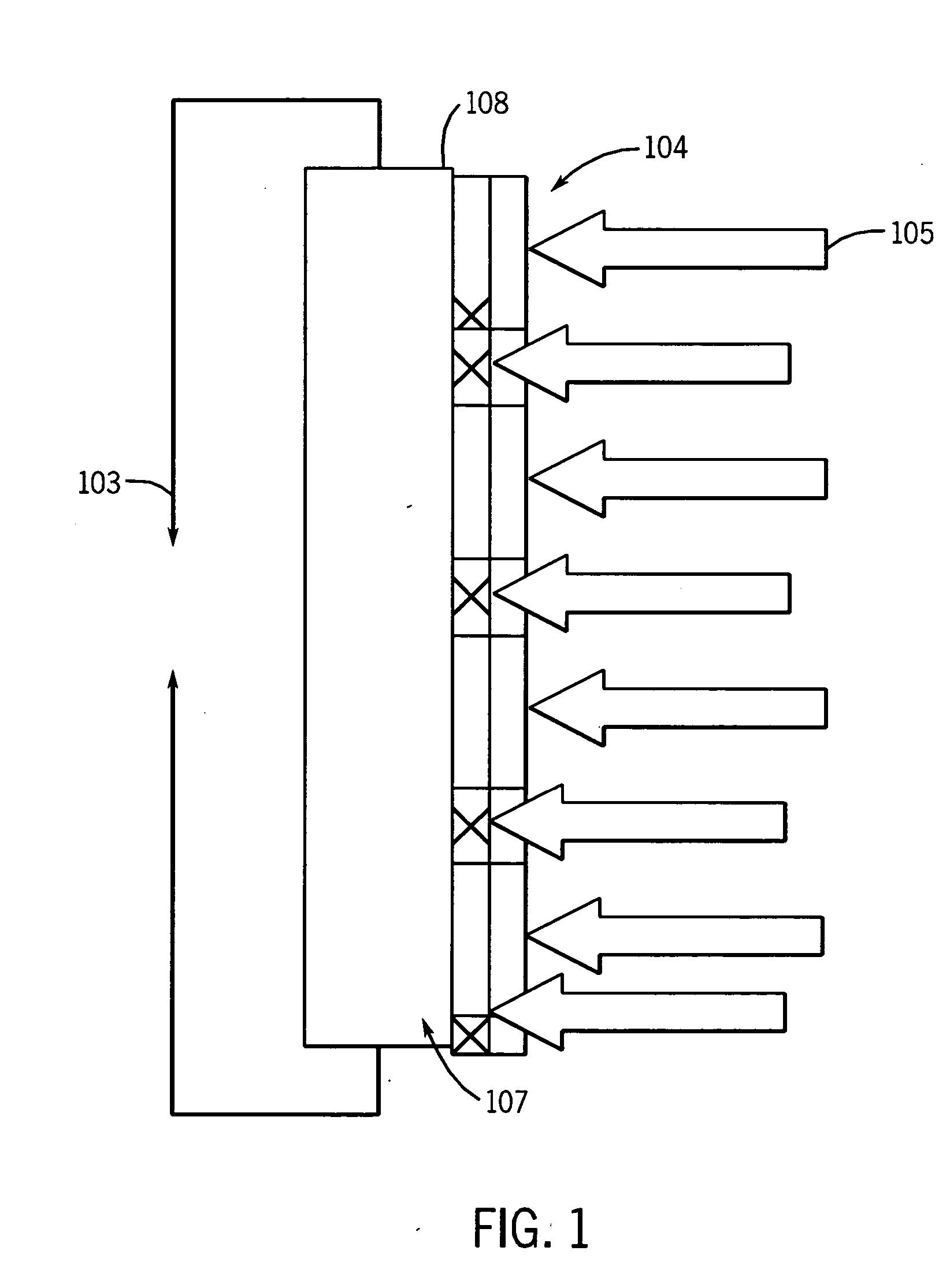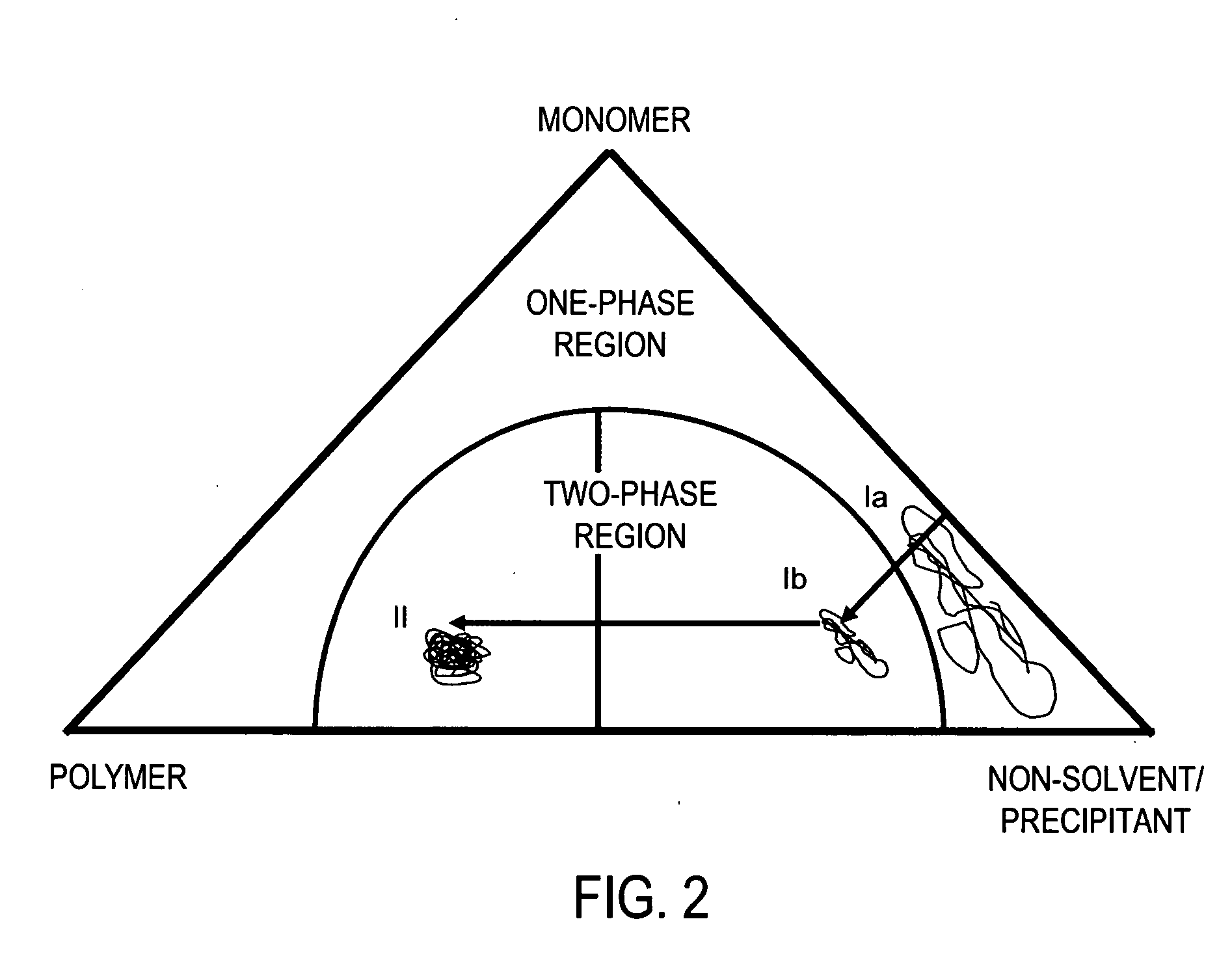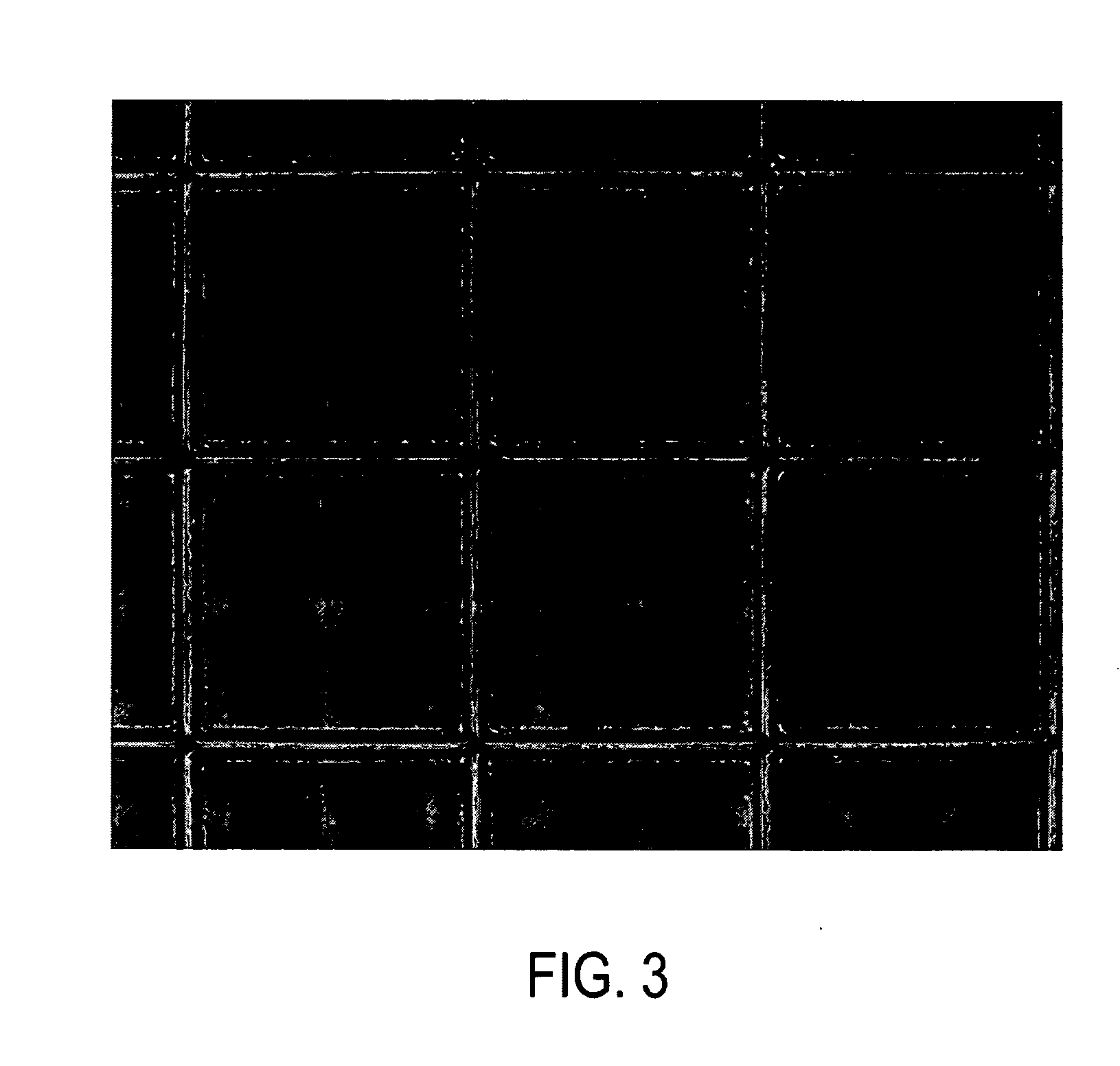Spatially controlled, in situ synthesis of polymers
a synthesis and in situ technology, applied in the field of synthesis of polymers, can solve the problems of limited process to produce low aspect ratio structures and cannot be extended to synthesis of thick and stand alone hydrogel micro or nanopatterns, and achieve good structural stability and aspect ratio, and increase the effect of size chang
- Summary
- Abstract
- Description
- Claims
- Application Information
AI Technical Summary
Benefits of technology
Problems solved by technology
Method used
Image
Examples
example 1
Chemically Initiated Polymerization of N-isopropylacrylamide in a Quiescent-Fluid Reactor
[0030] This example illustrates that the primary structure of polymeric domains produced from quiescent FRRPP systems is that of relatively stable nanometer scale particles (as shown in V. Tirumala, Y. Dar, H.-H. Wang, D. Mancini, and G. T. Caneba, “Nanopolymer Particles from a Controlled Polymerization Process”, Advances in Polymer Technology, 22, 126 (2003)). The laboratory work for example 1 was carried out at Michigan Technological University, Department of Chemical Engineering. N-isopropylacrylamide was polymerized in a {fraction (1 / 16)}th inch-outside diameter (OD) tube reactor, which is assumed to maintain a quiescent fluid. A 0.08 grams of monomer mixture along with 0.3 milligrams of azo-initiator 2,2′-azobis(2-(2-imidazolin-2-yl)propane) (VA-044) was dissolved per 1 milliliter of water. A crosslinker, ethylene glycol dimethacrylate (EGDMA), was added at 10% (wt. / wt.) to the monomer. Ni...
example 2
Synchrotron-Radiation-Induced Polymerization of Low Aspect-Ratio Hydrogel Microstructures
[0032] A mixture containing 20-wt % N-isopropylacrylamide, 2 wt % calcium methacrylate, and 78-wt % water was used for preliminary patterned polymerization work. Calcium methacrylate, which acts a crosslinking agent, was produced by neutralizing methacrylic acid with calcium hydroxide. Nitrogen gas was bubbled through this mixture to remove the dissolved oxygen in order to prevent oxygen from terminating the free radicals generated upon irradiation of the monomer mixture.
[0033] The reactive fluid was sandwiched between two 4-inch silicon wafers, one of which had an oxidized surface. An oxide surface is used to promote adhesion of the fluid and thus the polymerized pattern. The sides of the sandwich of wafers and reactive fluid were sealed with a Kapton™ tape. Spatially controlled radiation initiation studies were carried out at the SRI-CAT beamline 2-BM-B of the Advanced Photon Source with the...
example 3
In Situ Fabrication of High Aspect-Ratio Thermoreversible Hydrogel Microstructures
[0035] 20% N-isopropylacrylamide was dissolved in water, to which a 10% (wt. / wt relative to N-isopropylacrylamide) N,N′-Methylene bisacrylamide was added as a crosslinker. The monomer mixture was introduced into a liquid cell consisting of two oxide-coated silicon wafers separated by a 125 micron-thick Kapton® spacer. The cell was sealed first with a Teflon® thread seal, and was taped using a Kapton® glue tape. Sealing with Teflon® thread seal prevents evaporation of water from the silicon chamber at high temperatures. The monomer mixture, maintained at 57° C., was exposed through a hard x-ray mask, made by the same procedure as explained in Example 1, for about 2.5 hrs to an overall dose of 2000 (a.u.). The smallest feature size on the mask was 10 microns, thus producing microstructures of aspect ratio˜25. {FIGS. 6, 7} The patterns produced were frozen in dry ice, before air drying in a chemical fume...
PUM
| Property | Measurement | Unit |
|---|---|---|
| Temperature | aaaaa | aaaaa |
| Critical solution temperature | aaaaa | aaaaa |
| Microstructure | aaaaa | aaaaa |
Abstract
Description
Claims
Application Information
 Login to View More
Login to View More - R&D
- Intellectual Property
- Life Sciences
- Materials
- Tech Scout
- Unparalleled Data Quality
- Higher Quality Content
- 60% Fewer Hallucinations
Browse by: Latest US Patents, China's latest patents, Technical Efficacy Thesaurus, Application Domain, Technology Topic, Popular Technical Reports.
© 2025 PatSnap. All rights reserved.Legal|Privacy policy|Modern Slavery Act Transparency Statement|Sitemap|About US| Contact US: help@patsnap.com



